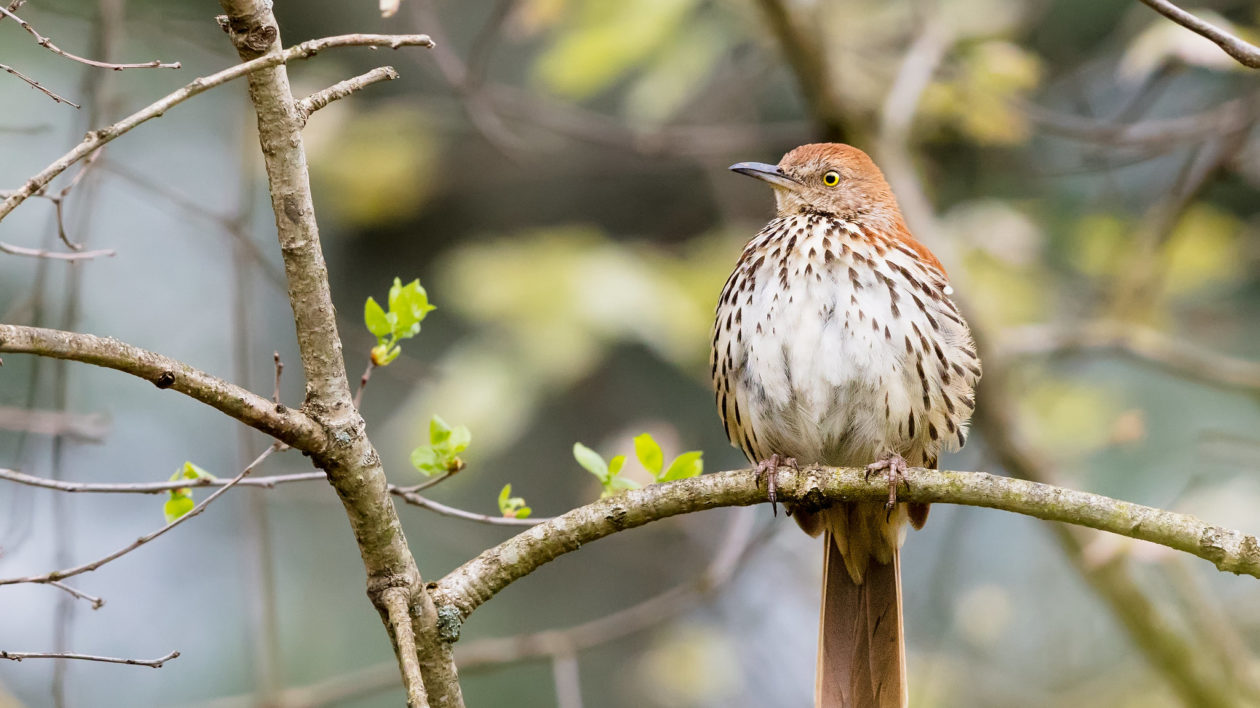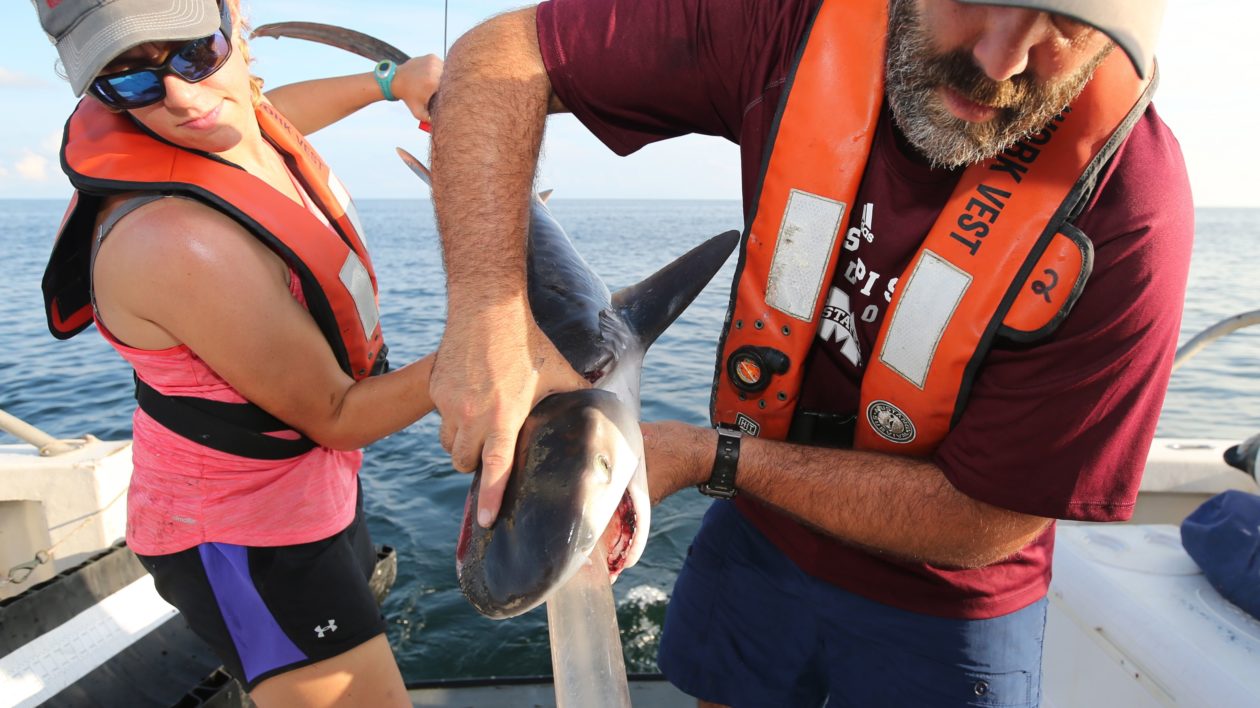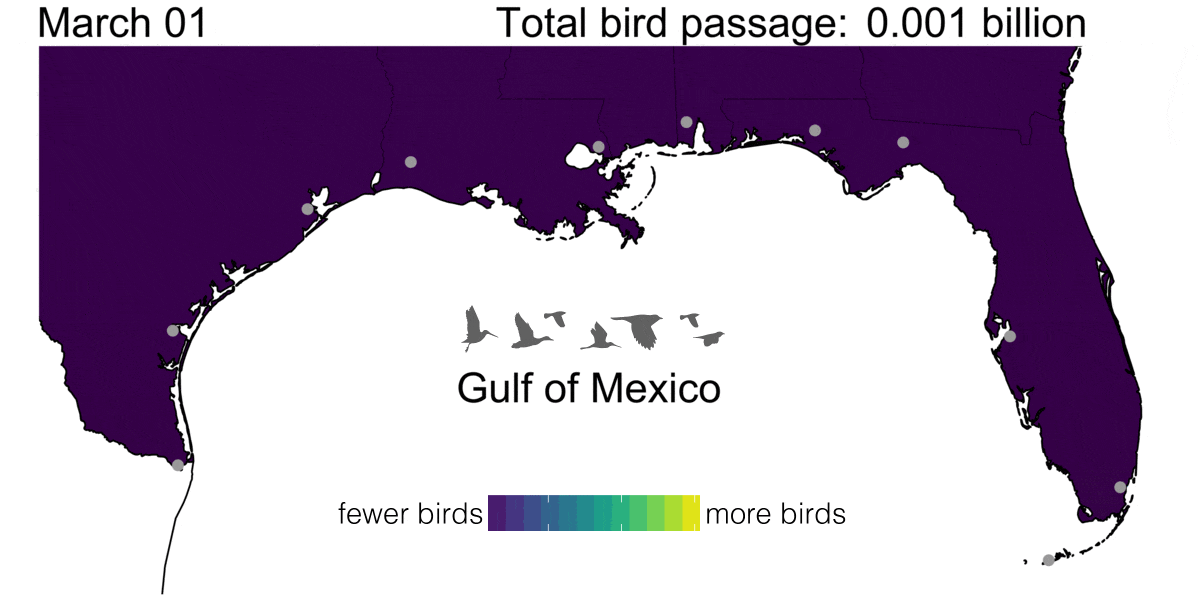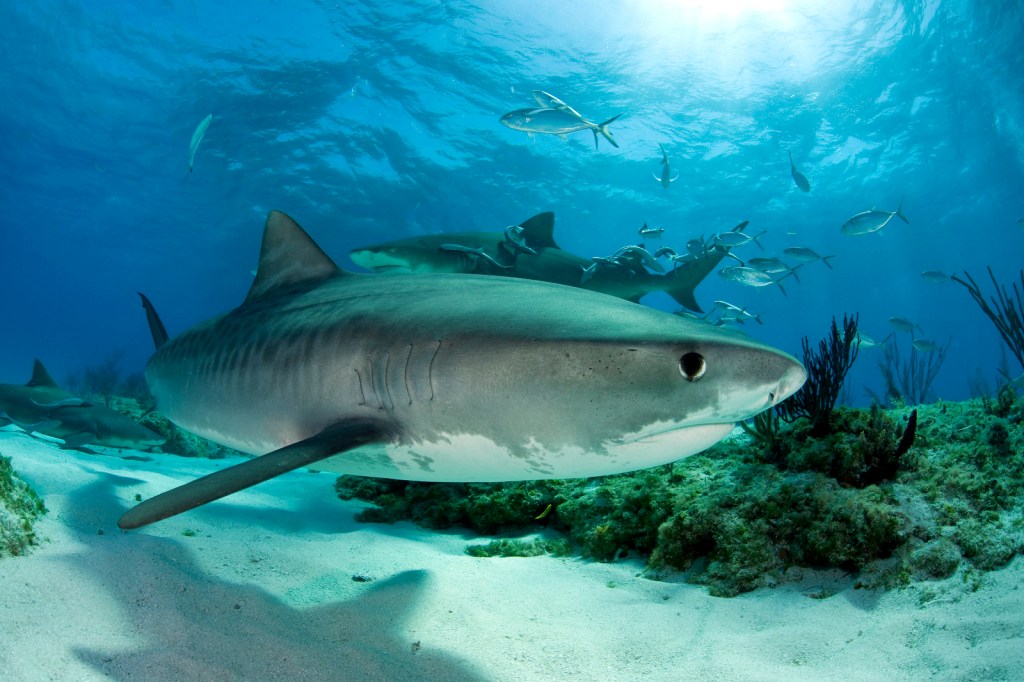The house wren or kingbird outside your window right now might one day end up in the stomach of a baby tiger shark. If that seems highly improbable, well, think again.
It’s well known among backyard birders that hawks have taken advantage of the bounty to be found at backyard feeders. In fact, some hawk species have become more urban. Where there’s an abundance of prey, predators will congregate.
Something similar is going on in the Gulf of Mexico, except the predator is the tiger shark.
A new study published in the journal Ecology found that baby sharks do indeed feed on songbirds. And this isn’t just a one-time freak occurrence. The evidence suggests that sharks actually target terrestrial songbirds.
Here is what’s going on.
The Feather in the Shark Barf
It started with a routine fisheries survey in the Gulf of Mexico. Marcus Drymon, a marine fisheries researcher for Mississippi State University, was sampling fishes using long lines. The researchers had just pulled in a small tiger shark, and were in the process of weighing and measuring it. The shark regurgitated, a not-unusual occurrence during the stress of capture. But its stomach contents caught the researcher’s attention.
“It barfed up feathers,” says Drymon, lead author of the paper. “I assumed it was from a sea bird like a pelican, gull or cormorant. I thought I could identify them at the lab using a bird feather ID book. It was a lot more difficult than I thought.”
Drymon sent the feathers to friend and frequent collaborator Kevin Feldheim, a geneticist with the Field Museum. His lab analyzed the DNA of the partially-digested feathers.
According to the Field Museum’s report on the findings:
“The scientists took tiny pieces of the bird remains and used chemicals to break them down into their basic molecular components. From there, they were able to examine the DNA sequences present in the bird tissues and compared them to databases of bird DNA to see what species they were from.”
Feldheim, like Drymon, thought the feathers would come from seabirds. After all, tiger sharks have been documented targeting baby albatrosses off Hawaii, and fish like giant trevally will focus on baby sooty terns that fall from their cliff nests into the water.
But the feathers in this shark were not from a seabird.
“It was a brown thrasher,” says Feldheim. “A songbird.”

While surprising, Drymon notes that tiger sharks are really opportunistic feeders. “They are notorious for their dietary breadth,” he says. “They will eat just about anything.”
And many fish will take advantage of a bird that falls in the water, with species from largemouth bass to Murray cod occasionally taking the wayward duckling or pigeon. A northern pike in Alaska was once found with a baby bald eagle in its stomach, but that doesn’t mean pike routinely feed on eagles.
Decades ago, a researcher found a yellow-billed cuckoo in a tiger shark’s stomach. So maybe the brown thrasher in the shark’s stomach was just another random incidence in the “fish versus birds” files.
A Songbird Feast
Drymon and his team began pumping the stomachs of all the young tiger sharks they caught. And they found more feathers. In fact, of 105 sharks studied, 41 had feathers in their stomachs. Some could be identified morphologically, but the rest were sent to Feldheim’s lab for identification.
“None were seabirds,” says Feldheim. “There was one American coot, a marsh species. The rest were songbirds. We found doves, swallows, an Eastern kingbird, a yellowthroat. These were species most people associate with their backyards, not as shark food.”
“We hypothesized that young tiger sharks were focusing on areas where they could feed on songbirds, but we didn’t know the mechanism for how this was happening,” says Drymon.

Lunch-time conversations with avian ecologist Auriel Fournier (now director of the Forbes Biological Station) led Drymon to eBird, the popular birding app for citizen scientists to document bird sightings. Peak sightings for songbird species along the Alabama/Mississippi coast matched when those birds were found in tiger shark stomachs.
Literally billions of songbirds migrate across the Gulf of Mexico each year, a long and perilous journey. Tiger sharks were congregating along migration routes. One nearby community – Dauphin Island, Alabama, even advertises itself as “America’s Birdiest Coastal Town.”
“If even a tiny fraction of the birds don’t make the migration, it still represents a lot of food,” says Drymon. “We hypothesize that young tiger sharks congregate in areas to take advantage of this. Unexpected weather patterns and unexpected storms force songbirds into the water.”
“Unlike seabirds, these birds are not well equipped to take off once they end up in the ocean,” adds Feldheim.

Easy Protein
Adult tiger sharks will eat “pretty much anything they want,” according to Drymon, including sea turtles. But baby tiger sharks, about a meter long at birth, mainly scavenge. Songbirds on the water present a perfect source of protein.
This has led at least one media outlet to propose a new verse to that song. “They eat birds, doo doo doo doo doo doo.” Apologies if this is now in your head for the rest of the day.
There’s not evidence that other shark species key in on this bounty. In part, it’s because tiger sharks are such opportunists and in part due to feeding habits. “Tiger sharks often feed closer to the surface than other species,” says Drymon. “I think the birds are likely dead when the sharks feed on them. But they are likely floating or just starting to sink.”
As an avid fly fisher, I admit that I am now obsessing over the idea of casting large dry flies resembling woodpeckers into the Gulf of Mexico.
But more, it’s a fascinating look at an ecological relationship that had not been documented previously.
“I use this as an example for my students of the importance of a multidisciplinary approach,” says Drymon. “I research fisheries but the full picture would not have been possible without the expertise of an avian ecologist and a geneticist. Bringing in other disciplines adds depth and complexity to the story. And it helps us find the missing puzzle pieces.”
Birders and scientists alike know that many birds don’t complete their migratory journey across the Gulf of Mexico. But what ever becomes of the birds that fall into the ocean? Now we know: many become shark food.
“Those feathers we found in shark barf didn’t represent an isolated occurrence,” says Drymon. “Songbirds are not an insignificant food source for young tiger sharks. We believe the sharks are in areas where birds are more likely to fall.”




Do you fish for baby tiger sharks? If so, don’t their teeth cut the fishing line?
Hi Sharon,
Thanks for your question. I have never fished for tiger sharks (or any sharks, actually). However, some anglers do, and they often use steel or other leaders to reduce the chances of sharks cutting the line.
Matt
Not surprising in the least. I’ve examined the contacts of many tiger sharks stomachs. Some of the more interesting items included mongoose and rats (off Hawaii). These animals were no doubt washed off rocks or died on land and the streams washed them into the ocean, hence tigers feeding at river mouths.
I’ve never found any birds, however there was a record of a small chicken cage with a dead chicken still in it found in the stomach of a large tiger (apparently true!).
And you think you have problems with your neighbor’s cat.
Please be sure to share your fly pattern for woodpeckers!!! Love your blog. Keep ’em coming.
Thanks for something I’d never thought of before. And the sentence beginning, “As an avid fly fisher” was the best laugh I’ve had this week, which is also appreciated. What a mental picture…